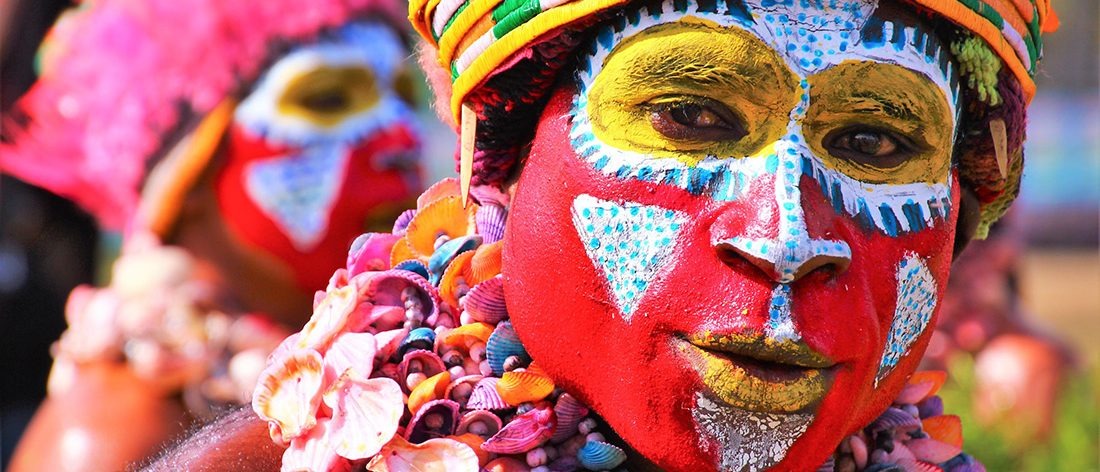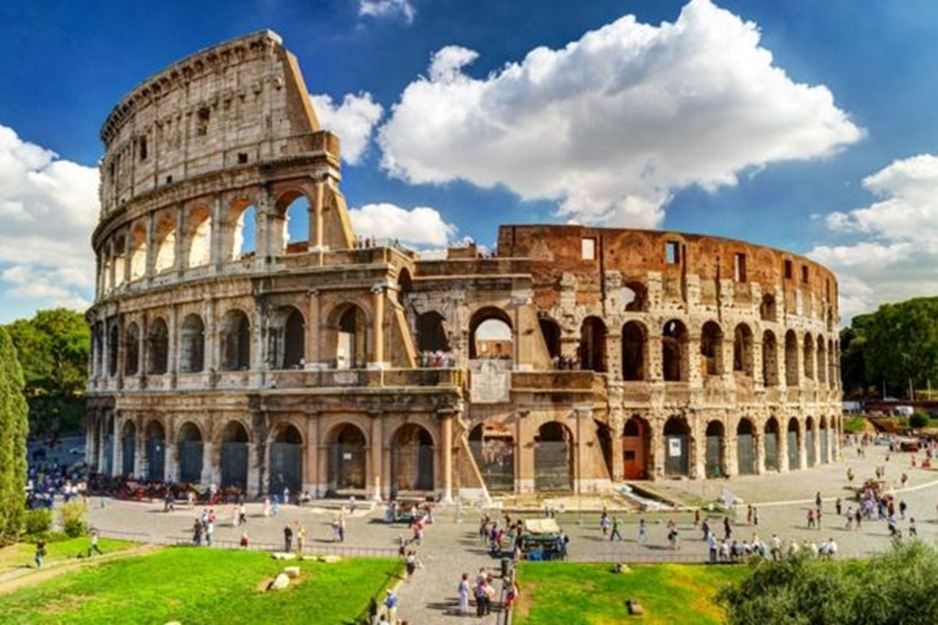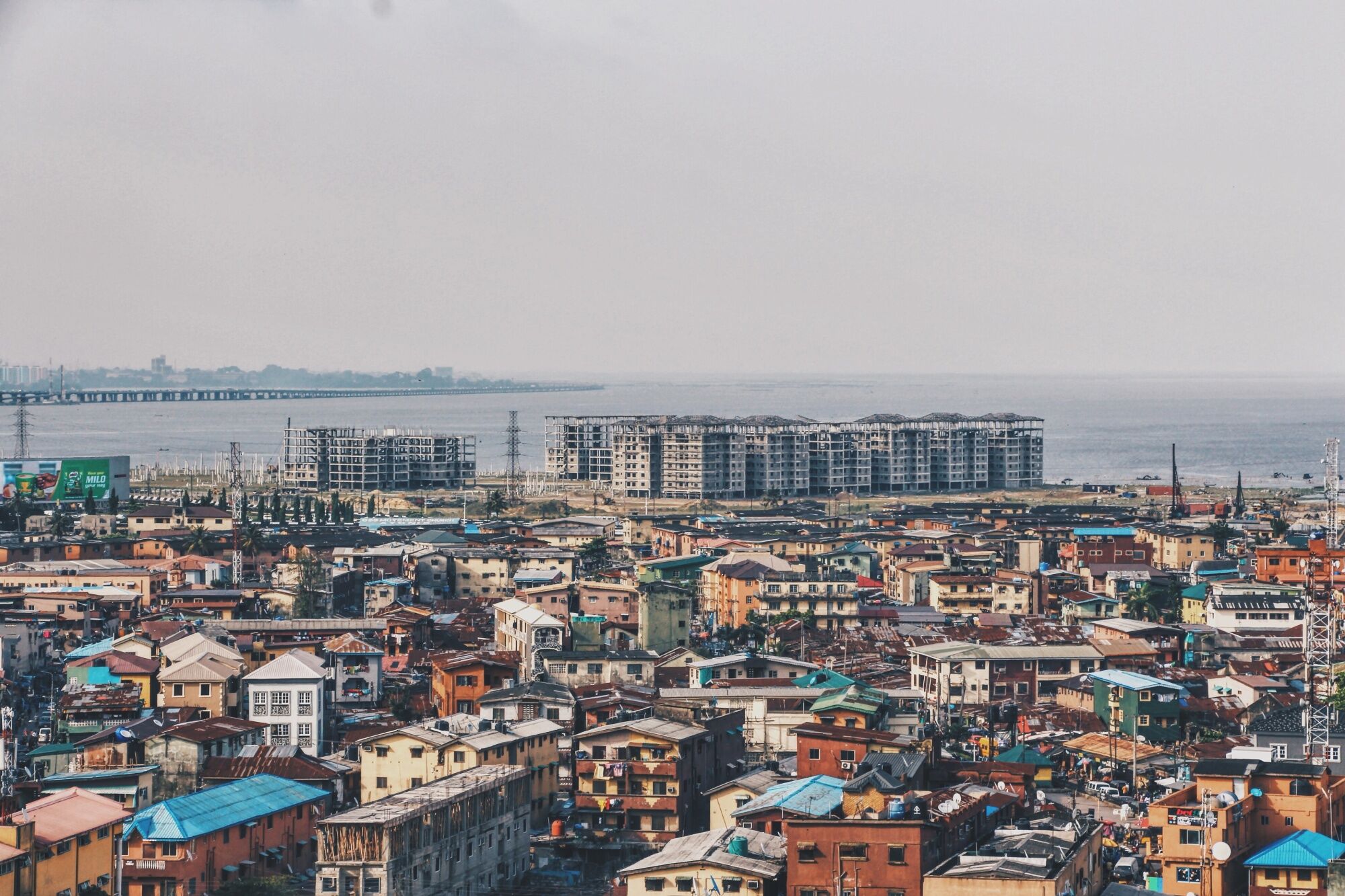Cultural Festivals Around The World
Cultural celebrations serve as vibrant celebrations that bring people together, bridging distances and fostering a sense of unity among diverse communities. These festivities serve as a testament to the splendor of the human legacy all over the world, showcasing unique customs, artistic expressions, and practices that have been passed down through the ages.
Cultural festivities offer an insight into the heart of a community through vibrant processions, traditional presentations, gastronomic delights, and symbolic rites. In this essay, we will examine a diverse array of global cultural celebrations and highlight the significance they have for preserving and promoting cultural uniqueness.
Global Cultural Festivals
In this essay, we will examine a diverse array of global cultural celebrations and highlight the significance they have for preserving and promoting cultural uniqueness.
- Songkran in Thailand
Songkran is a time of rebirth, cleansing, and the washing away of sins and ill luck. It has profound cultural and theological origins in Theravada Buddhism. People participate in amicable water fights to banish the bad luck of the previous year and usher in the new one with optimism during this countrywide water event that takes place across the nation.
Families gather during the festival to celebrate, catch up with old acquaintances, and take part in customary rituals. During this time, younger generations pour perfumed water over the hands of the elderly in order to seek their blessings.
Thai dance, music, religious rites, and other traditional performances and cultural activities add to the joyous atmosphere while highlighting the creative and spiritual facets of Thai traditions.
During Songkran, there are also street processions and parades that showcase intricate floats, traditional attire, and cultural acts that showcase the depth and diversity of Thai culture.
Due to Songkran’s growing popularity, travelers from all over the world come to enjoy its special fusion of festivity and tradition. The water battles are an active component of many Thai tourist attractions, which has transformed the event into an international celebration of joy and unity.
- India’s Diwali
India observes Diwali, a major religious holiday, to remember the birth of Lord Mahavira, the return of Lord Rama to Ayodhya, and the rescue of Guru Hargobind Ji from captivity. Preparations, cleaning, lamp and firework lighting, rangoli creations, and communal celebrations are all part of the festivities. The “Diwali Safai” ritual is a symbolic purging of material and spiritual impurities in order to welcome the goddess Lakshmi, who is thought to bring wealth and prosperity.
The victory of light over darkness is symbolized by the lighting of lamps, diyas, and candles. Homes are decorated with traditional decorations and elaborate rangoli patterns, which evoke a joyous mood. Giving and receiving presents and candies among loved ones is a representation of friendship, affection, and bolstering bonds. Lakshmi Puja, a period for prayer and religious rites with ornate ceremonies, is also observed on Diwali.
Diwali is also a time for community celebrations, complete with brightly colored lights and decorations in streets, marketplaces, and public areas. But as people become more conscious of how pyrotechnics affect the environment, eco-friendly festivities are becoming more popular.
- Eid al-Fitr: Commemorating the Breaking of the Fast Festival
An important day in the Islamic calendar, Eid al-Fitr signifies the conclusion of Ramadan, a month-long fast from sunrise to sunset. The new moon sighting, which marks the end of Ramadan, determines when Eid occurs.
Muslims congregate to offer Salat al-Eid, a prayer of devotion and thanksgiving, at mosques or special prayer locations. Religious leaders frequently place a strong emphasis on forgiveness, appreciation, and community cohesion.
Muslims are obligated to offer Zakat al-Fitr, a charitable donation, before to the Eid prayer in order to cleanse individuals who fast from immoral behavior and support the underprivileged. Eid al-Fitr is a time to celebrate joy and kindness by sharing meals, eating, and exchanging presents.
Open houses and community interaction are frequent practices that promote inclusivity and harmony among Muslims. Celebrations are enhanced by the distinct customs of various nations and regions, which include lively marketplaces, beautifully decorated streets, customary performances, and cultural activities.
Beyond national borders and cultural divides, Eid al-Fitr is a global holiday. Muslims from many origins, tongues, and customs unite to commemorate the common ideals of community, thankfulness, and compassion. The joyous “Eid Mubarak” messages spread throughout the world, fostering a feeling of interconnectedness among Muslims worldwide.
- Tlacotalpan, Mexico – Candlemas
Candlemas, a noteworthy occasion commemorated on February 2nd, is also called “Día de la Candelaria” in Mexico. The celebration in Tlacotalpan, Veracruz, is distinguished by its distinct fusion of indigenous customs with Catholic traditions.
The festival, which honors Jesus’ presentation in the Jerusalem Temple, has its roots in Catholicism. The centerpiece of the festivities is the La Candelaria parade, a magnificent exhibition of religion and custom. In the age-old “Danza de los Voladores” (Dance of the Flyers) ceremony, participants ascend a pole and spiral down, signifying protection for the town and a plentiful harvest.
Candlemas is also connected to gastronomic customs, including making and sharing tamales, which stand for abundance and sharing. The elaborate decorations that adorn Tlacotalpan’s homes and streets demonstrate the community’s inventiveness and dedication to maintaining traditional customs. The festival is a reflection of Mexican culture’s syncretism, which combines religious observances with age-old customs.
- Dia de los Muertos, or Day of the Dead
A Mexican holiday known as the Day of the Dead is also observed to some extent in other countries in Latin America and the United States. Its goal is to pay tribute to departed loved ones and assist them in accepting death by approaching it in a comfortable manner devoid of anxiety or terror.
The traditions surrounding the celebration originated with Mexico’s pre-Hispanic peoples. The goddess Mictecacihuatl, commonly known as the “Lady of the Dead,” presided over the month-long event. In honor of All Saints’ Day and All Souls’ Day, which were honored after the Spanish arrived in Mexico and began converting the native peoples to Roman Catholicism, the festival was moved to fall on November 1 and 2, respectively.
There are regional variations in contemporary observances. Some rural families decorate grave sites with candles, marigolds, and their deceased loved one’s favorite treats to attract departed family members to return for a reunion. In urban areas, people walk outside to celebrate with gusto and to eat and drink. Some wear wooden skull masks called calacas.
Many families decorate their homes with altars, or ofrendas, that include food, flowers, candles, and photographs. The festivities are usually characterized by dark humor. Toys and food items such as breads and candies are shaped like skeletons and skulls, which are symbols of death.
6. China’s Lunar New Year
A major traditional celebration in China, the Chinese New Year, also called the Spring Festival, ushers in the lunar new year and represents luck and rebirth. A family reunion supper known as “wei lu,” when families exchange good wishes for the upcoming year, kicks off the 15-day festival. Red lanterns, banners, couplets, and red envelopes are used to decorate and adorn clothes in red, signifying good fortune and blessings. In the night sky, firecrackers and fireworks are lighted, symbolizing luck and blessings. Public performances of traditional lion and dragon dances are held to promote prosperity in the neighborhood.
On the first day of the new year, family altars receive offerings, and temple visits and prayers are also customary. Open houses and family get-togethers build a sense of community and unity. Traditional dishes like nian gao, fish, dumplings, and spring rolls have significant meaning and are frequently associated with longevity, wealth, and good fortune.
On the fifteenth day of the lunar new year, the Lantern Festival brings the festivities to a close with lantern displays and the Yuanxiao Festival, which features the sharing of sweet rice dumplings. The world’s largest yearly human movement, known as “Chunyun,” occurs during the Chinese New Year.
- Munich Wine Festival
Oktoberfest, which is the biggest Volksfest in the world and includes a beer festival and a traveling carnival, is pronounced [˔kˈto˞bɐˊfɛst] in German. Every year, the event in Munich, Bavaria, Germany, draws more than six million tourists from all over the globe and runs from mid- to late-September to the first Sunday in October. Known locally as d’Wiesn and named after the Theresienwiese fairgrounds,
Celebrated since 1810, Oktoberfest is an important part of Bavarian culture. Oktoberfest celebrations, which are based on the Munich event, are also held in many other locations across the world.
Large amounts of Oktoberfest beer were consumed during the celebration; in 2014, 7.7 million liters (2,000,000 US gal) were served. There are plenty of activities for attendees to enjoy, including as games, side stalls, rides, and a variety of traditional foods.
The festival’s original schedule, which ran for 16 days ending on the first Sunday in October, was altered in 1994 as a result of German reunification. As a result, the celebration lasts until October 3 (German Unity Day) if the first Sunday in October comes on the first or second.
When the first Sunday comes on October 2, the celebration lasts for 17 days, and when it falls on October 1, it lasts for 18 days. To celebrate the event’s bicentennial, Oktoberfest 2010 was extended until October 4th, the first Monday of the month.
- Spain’s Semana Santa
In several Latin American nations, the week between Palm Sunday and Easter, which is commonly known as Holy Week, is called Semana Santa. Communities gather at this time to remember the last week of Christ’s life.
READ ALSO: Best Travel Gifts For Her
In Spain, different localities celebrate Semana Santa in different ways. Málaga and Seville, for example, have quite lavish celebrations, while Valladolid and Zamora typically have more somber activities. The fundamental meaning and components of these religious celebrations are the same regardless of the locale. Catholic fraternities and brotherhoods take part in parades that go through the streets.
During the processions, nazarenos, or penitents, carry crosses or candles while wearing colorful robes and hiding their faces. Many decide to go barefoot, sometimes with chains and shackles around their ankles, as a sign of their unwavering dedication, even though the processions take more than ten hours to complete.
The nazarenos march with big floats called pasos, some of which have been around for generations and hold historical significance for the brotherhoods. Detailed sculptures that portray images from key Biblical passages, such the Passion of Christ and the Virgin Mary in mourning, adorn these floats.
- Cherry Blossom Festival in Hamburg, Germany
Annually held in Hamburg, Germany, the Cherry Blossom Festival honors the fleeting beauty of cherry blossoms and is modeled after the Japanese tradition of Hanami.
The event is held in the scenic, historically significant Jenischpark, which features peaceful walkways and beautifully manicured flowers. A wide range of cultural events, exhibitions, tea ceremonies, and gastronomic treats are all part of the festival’s schedule. In an effort to foster cross-cultural understanding, the festival frequently crowns a “Cherry Blossom Princess.”
Regular events include workshops and photography competitions, with prizes given for the most imaginative entries. The festival is aimed for family interaction, featuring activities like picnics and kite flying. The festival has embraced environmental consciousness as well, encouraging conservation and sustainability initiatives.
- Brazil’s Carnival
Brazil’s carnival is a colorful celebration with a strong cultural heritage that features brilliant colors, upbeat music, and boundless energy.
The tradition, which originated with European masquerade balls, African rhythms, and indigenous celebrations, has developed throughout the ages into a singular manifestation of Brazil’s cultural diversity and a celebration of individuality and ingenuity.
The samba schools, who train for months to compete in lavish parades with extravagant costumes, complex floats, and choreographed performances, are the center of Carnival.
Millions of spectators are entertained by thousands of performers, including samba dancers, musicians, and intricate floats, during the grand Carnival parades, which take place on Rio de Janeiro’s famous Sambadrome. Around the nation, there are also street carnivals and street celebrations called “Blocos,” which feature lively costumes, dancing, and live music.
One of the main characteristics of Carnival is the masquerades and costumes, which many participants spend months creating.
The pulse of Carnival is samba music, which sets the mood for exuberant dance acts that enthrall spectators. The celebration’s scale is reflected in the title, “Greatest Show on Earth,” which attracts millions of residents and visitors to see this incredible show.
- India’s Holi
Based on Hindu mythology, Holi, also known as the event of Colors, is a widely observed event in India. It represents the coming of spring and the victory of good over evil. Holika Dahan, a customary bonfire set on the eve of Holi to represent the victory of good over evil, marks the start of the festival. During the festival, people throw colored powder and water in a joyful way to celebrate equality and solidarity while tearing down societal barriers.
Sweet treats like malpua and gujiya are customarily shared by neighbors and friends. People of all ages get together to celebrate Holi, which unites communities. Folk dances and music, among other cultural events, contribute to the joyous atmosphere. In India, several regions celebrate Holi with different traditions, such Lathmar Holi in Uttar Pradesh and Mathura and Vrindavan. A diverse and international audience is drawn to modern festivities, which frequently include music festivals, dance parties, and other activities.
12. Spain’s Rioja Wine Harvest Festival
The Rioja wine region in northern Spain celebrates the grape harvest and winemaking customs with the Rioja Wine Harvest Festival, commonly called “La Vendimia.” The celebration combines traditional customs, cultural events, and a celebration of the region’s outstanding wines.
The grape harvest, traditional grape-picking, pressing, and treading are all highlighted throughout the festival. In addition to tasting a wide range of Rioja wines, tourists can learn about the geography, grape varietals, and winemaking processes of the area. Along with traditional clothing, music, dancing, and gastronomic treats, the event showcases the diversity of the Rioja region’s cultures. Wine lovers and those curious to learn about Spanish customs will find the festival to be a warm and inclusive occasion that promotes a feeling of community and pride in the region.
- Barcelona, Spain’s La Mercè
Celebrated annually in Barcelona on the feast day of the Virgin Mary on September 24th, La Mercè celebrates Mare de Déu de la Mercè, the patron saint of the city.
The event has its beginnings in the 17th century when the Virgin Mary protected Barcelona from a locust epidemic, and has expanded to incorporate a broader cultural and artistic significance. One of the main events is the Correfoc, a fire race in which participants parade through the streets donning fireproof costumes and sparklers. Another noteworthy custom is the construction of human towers, or castells, which stand for cooperation and solidarity.
In addition, the event offers a range of genres and styles through concerts, shows, and street art. A traditional Catalan dance, the sardana dance is performed in squares and other public areas. Traditional celebrations are given a contemporary spin by the festival’s artistic installations and exhibitions.
- Saudi Arabia’s National Day
Celebrated annually on September 23, National Day of Saudi Arabia honors the establishment of the Kingdom of Saudi Arabia and serves as a testament to the pride, cohesion, and rich cultural legacy of the Saudi people. The day starts with customary rituals and parades that include military demonstrations, marching bands, and cultural events.
The Shahada and a sword on the national flag stand for the kingdom’s adherence to Islam. Traditional music, dancing performances, and folklore exhibits are all part of cultural celebrations. While community events and activities include carnivals, family-friendly activities, and communal feasts, fireworks and illuminations create a joyous mood.
A ceremonial speech by the leadership highlights the value of unity, development, and the welfare of the Saudi people and serves as a time for national contemplation. To highlight the abilities of the young, schools, colleges, and cultural organizations also host patriotic displays and cultural performances.
15. Greek Easter Celebrations
Easter is a major holy holiday in the Orthodox Christian calendar. It is also known as “Pascha” in Greek. It includes customary Easter feasting, symbolic rites, and observances of Holy Week. Holy Saturday’s Midnight Resurrection Service celebrates the victory of light over darkness. The meal consists of “Tsoureki,” a sweet bread decorated with red-dyed eggs, and “Magiritsa,” a soup made with lamb offal. Broken eggs are a game in which players fracture each other’s eggs, symbolizing the blood of Christ. Easter Sunday processions represent the transition from darkness to light. On Easter Monday, a.k.a. “Bright Monday,” young people participate in “Kounoupidi” customs, which involve tapping one other on the head with green onions. Outdoor celebrations, music, and dance combine cultural performances with religious practice to foster harmony and happiness.
Easter also signifies visits to monasteries, which provide opportunities for introspection and reconnection with one’s religious heritage.
In summary
These events provide a forum for the exchange of cultural aspects in addition to acting as a poignant reminder of the beauty inherent in variety. Upon concluding our investigation into cultural festivals across the globe, it is evident that these assemblies make a substantial contribution to the complex global tapestry of human existence.
We create a more inclusive and compassionate world where the richness of our common history is acknowledged and even embraced when we embrace the customs and traditions of all civilizations. We find a common humanity in the vibrant landscape of cultural festivals that transcends national borders and binds us together in appreciation of the many ways that humanity manifests itself.
Commonly Asked Questions
Which international cultural festivals are the most well-known?
Carnival in Rio de Janeiro, Brazil; Diwali, India; Chinese New Year festivities; Oktoberfest, Germany; and Venice Carnival, Italy are a few well-known cultural events.
In what ways do cultural festivals support the preservation of culture?
The preservation and promotion of cultural assets are greatly aided by cultural festivals. Through the exhibition of customs, ceremonies, and artistic creations, these celebrations aid in the transmission of cultural information throughout successive generations.
Are traditional practices the exclusive focus of cultural festivals?
Cultural festivals frequently feature modern components in addition to traditional activities. To reach a wider audience and maintain the vibrancy of the traditions, contemporary music, art, and technology might be incorporated.






